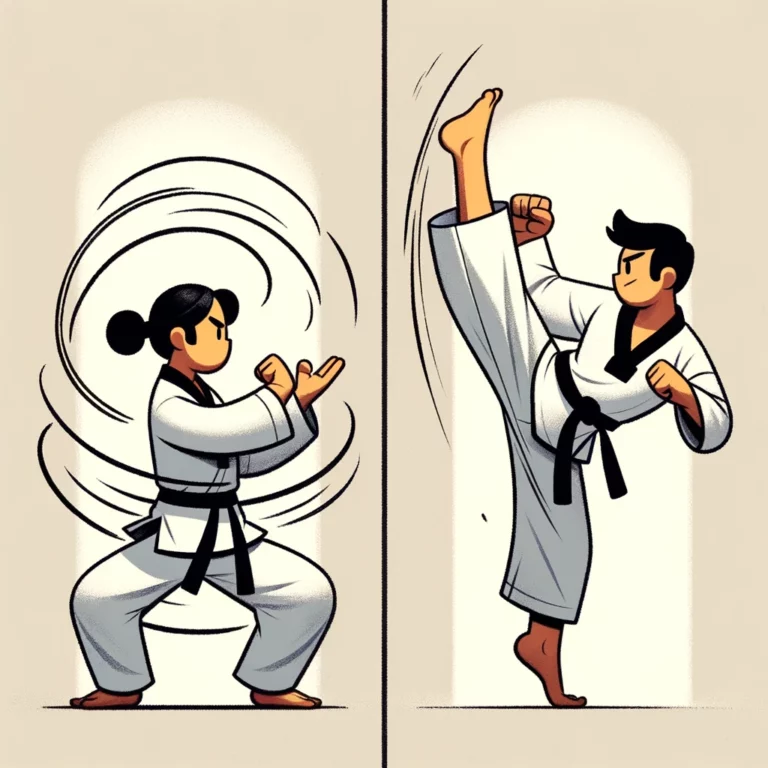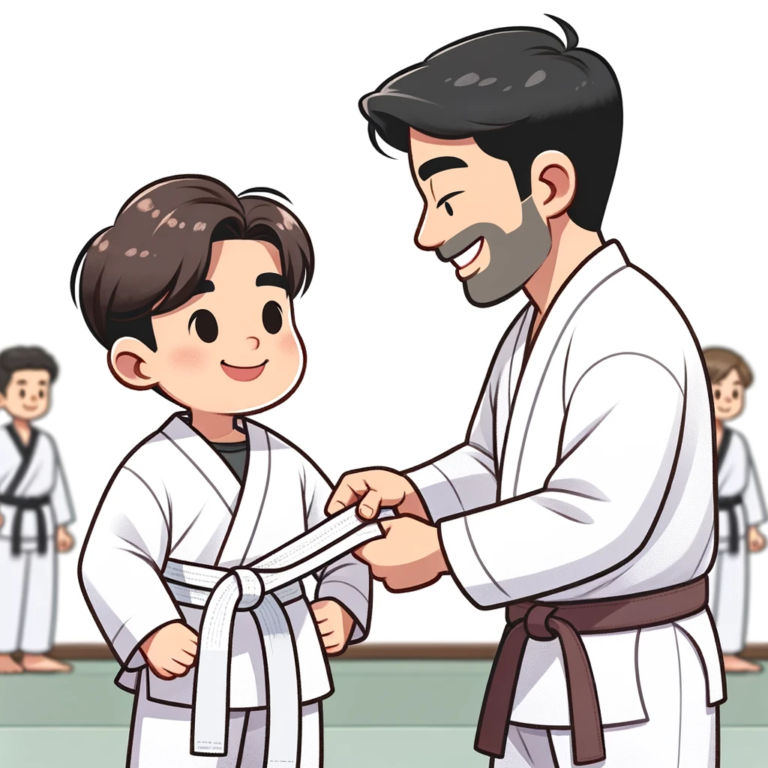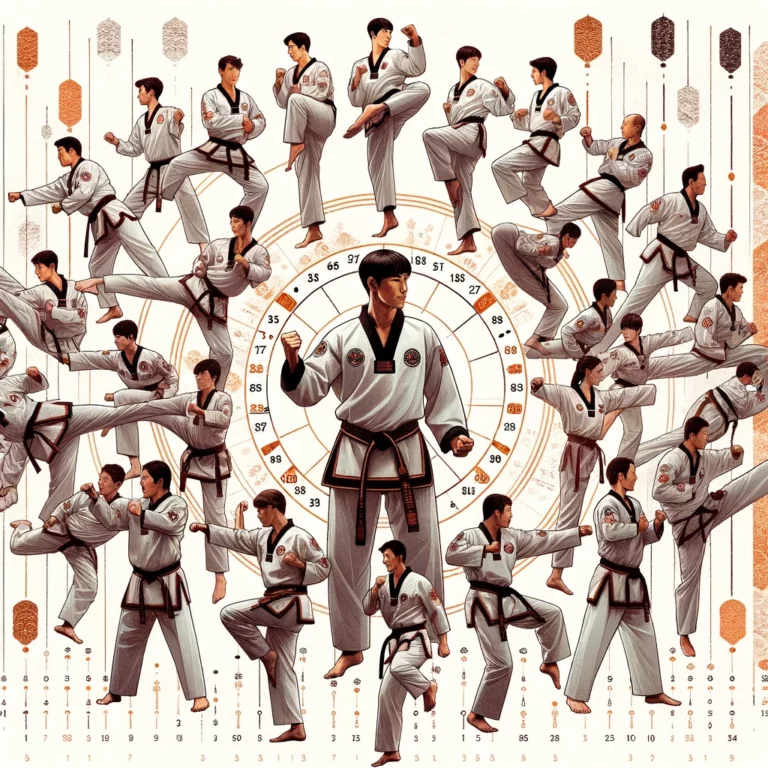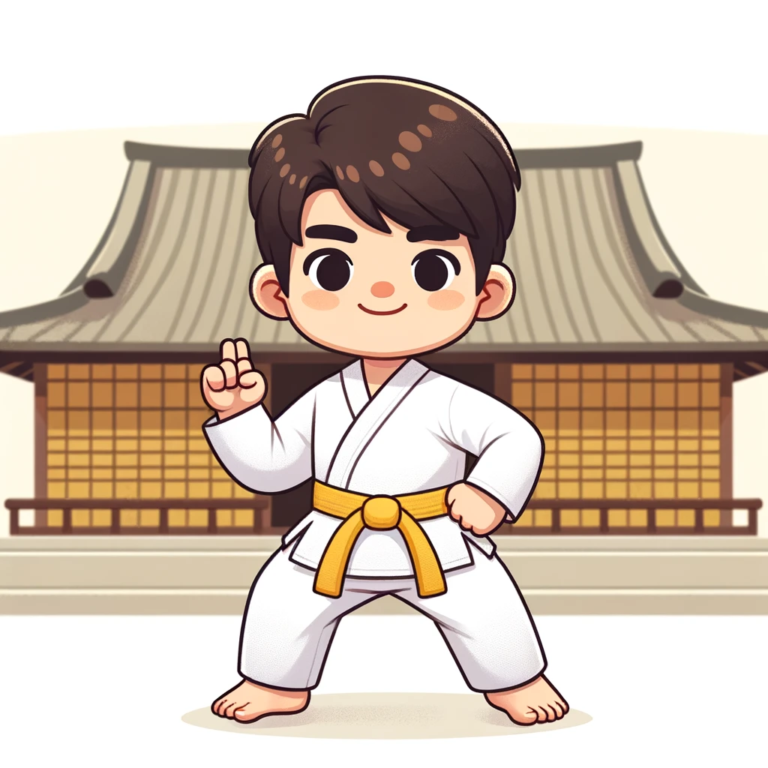Origin and History: Tracing the roots of Tae Kwon Do back to ancient Korean martial arts.
Tae Kwon Do, a famous martial art originating in Korea, has a rich and fascinating history dating back centuries. It is deeply rooted in ancient Korean martial arts, such as Taekkyeon and Subak, practised during the Three Kingdoms era (57 BC – 668 AD). These martial arts focused on techniques involving hand strikes, kicks, throws, and joint locks and were primarily used for self-defence and military training. As Korean civilization progressed, so did their martial arts development, eventually giving birth to Tae Kwon Do.
The name “Tae Kwon Do” reflects its fundamental principles and techniques. “Tae” means “to strike or break with foot”; “Kwon” signifies “to strike or break with fist”; and “Do” translates to “way” or “path.” Consequently, Tae Kwon Do can be interpreted as “The Way of Hand and Foot.” This martial art emphasises the effective use of kicks and punches and the promotion of physical and mental discipline. While its origins can be traced back to ancient Korean martial arts, Tae Kwon Do was officially recognized as a distinct art form in the mid-20th century. Its evolution and global recognition continue to cement its status as a remarkable martial art.
• Tae Kwon Do originated in Korea and dates back centuries.
• It is rooted in ancient Korean martial arts like Taekkyeon and Subak.
• These martial arts focused on hand strikes, kicks, throws, and joint locks for self-defence and military training.
• The name “Tae Kwon Do” reflects its fundamental principles and techniques.
• “Tae” means to strike or break with the foot, “Kwon” signifies striking or breaking with the fist, and “Do” translates to way or path.
• Tae Kwon Do emphasizes the effective use of kicks and punches and physical and mental discipline.
• It was officially recognized as a distinct art form in the mid-20th century.
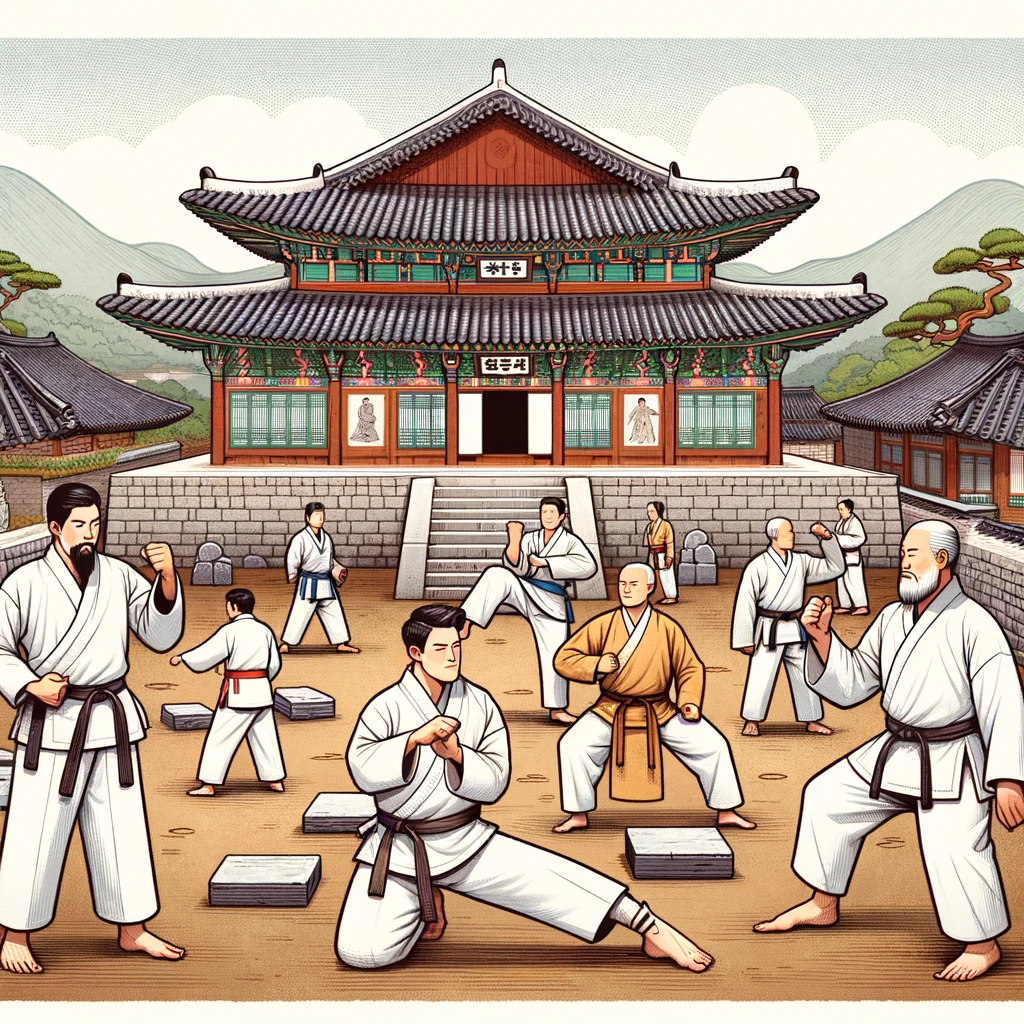
Philosophy and Principles: Exploring the core principles that guide Tae Kwon Do practitioners.
Tae Kwon Do is not simply about physical combat. It is a practice that encompasses a deep philosophy and principles guiding its practitioners. At its core, Tae Kwon Do emphasizes the cultivation of a strong mind, body, and spirit. Respect, discipline, and perseverance are central to the practice, instilling values beyond the martial arts training mat.
Respect is crucial in Tae Kwon Do, both for oneself and others. Practitioners are taught to respect their instructors, fellow students, and opponents, always demonstrating humility and courtesy. Respect for oneself involves maintaining an attitude of self-control and self-discipline, fostering the development of a strong character. Tae Kwon Do also promotes respect for one’s body, teaching practitioners to nurture and care for it, recognizing that it is a vessel for strength and growth. This principle extends to the practice of gratitude, appreciating the opportunities and experiences that Tae Kwon Do offers.

Belt System: Understanding the hierarchical ranking system and its significance in Tae Kwon Do.
The belt system is an integral part of Tae Kwon Do, representing the hierarchical ranking system that allows practitioners to progress in their skills and knowledge. The system is based on a series of coloured belts, starting with white for beginners and progressing through various colours, such as yellow, green, blue, red, and black. Each belt colour signifies a different level of expertise and symbolizes the wearer’s commitment and dedication to the art.
Apart from serving as a means of recognizing a practitioner’s progress, the belt system holds significant value in Tae Kwon Do. It acts as a motivational tool, providing individuals with tangible goals to work towards and a sense of achievement upon advancing to the next rank. The progression through the belt system also promotes discipline, perseverance, and character development, as practitioners must put in consistent effort, overcome challenges, and demonstrate mastery of specific techniques and forms to earn higher ranks. Moreover, the belt system fosters a sense of camaraderie and respect within the Tae Kwon Do community, as higher-ranked practitioners often serve as mentors and role models for those starting their journey.
Basic Techniques: Breaking down the fundamental strikes, kicks, and blocks used in Tae Kwon Do.
In Tae Kwon Do, mastering the basic techniques is essential for building a solid foundation in this martial art. The fundamental strikes involve using various body parts, such as the hands and feet, to deliver powerful blows to the opponent. The primary kicks in Tae Kwon Do include the front kick, roundhouse kick, and side kick, each requiring precise execution of technique to maximize its impact. Additionally, blocks form a vital defence aspect in Tae Kwon Do, allowing practitioners to protect themselves from oncoming attacks. By practising and perfecting these fundamental techniques, Tae Kwon Do students learn to effectively engage in offence and defence during sparring or self-defence situations.
To further enhance their skills, Tae Kwon Do practitioners delve into the intricate patterns of movements known as forms or poomsae. These forms are a sequence of choreographed movements that showcase the application of basic techniques in a dynamic and flowing manner. Students improve their physical abilities and develop mental focus, discipline, and concentration by memorising and performing these forms. Each form has its unique set of movements, which increase in complexity as students progress through different belt levels. Through dedicated practice and repetition, Tae Kwon Do students gain a deeper understanding of the martial art and elevate their overall level of proficiency.

Forms (Poomsae): Exploring the intricate patterns of movements that showcase Tae Kwon Do skills.
Forms, known as poomsae, are crucial to Tae Kwon Do training. These intricate patterns of movements are carefully choreographed sequences that showcase the practitioner’s mastery of the art. Each form consists of defensive and offensive techniques executed with precision and grace. The purpose of these forms is not just to demonstrate physical prowess but also to develop mental focus, discipline, and agility. By practising these patterns repeatedly, practitioners learn to integrate their mind, body, and spirit, achieving a harmonious balance reflecting Tae Kwon Do’s essence.
Within Tae Kwon Do, there are various forms that students must learn as they progress through their training. Each form builds upon the techniques learned in the previous ones, gradually increasing in complexity and difficulty. The forms incorporate various methods, including stances, strikes, kicks, and blocks. As practitioners advance, they must memorize and perform sequences of these techniques in a specified order. This requires physical strength, coordination, mental concentration, and memorization skills. Through consistent practice and refinement, practitioners can enhance their overall Tae Kwon Do skills, improving their speed, power, and accuracy in both forms and sparring.
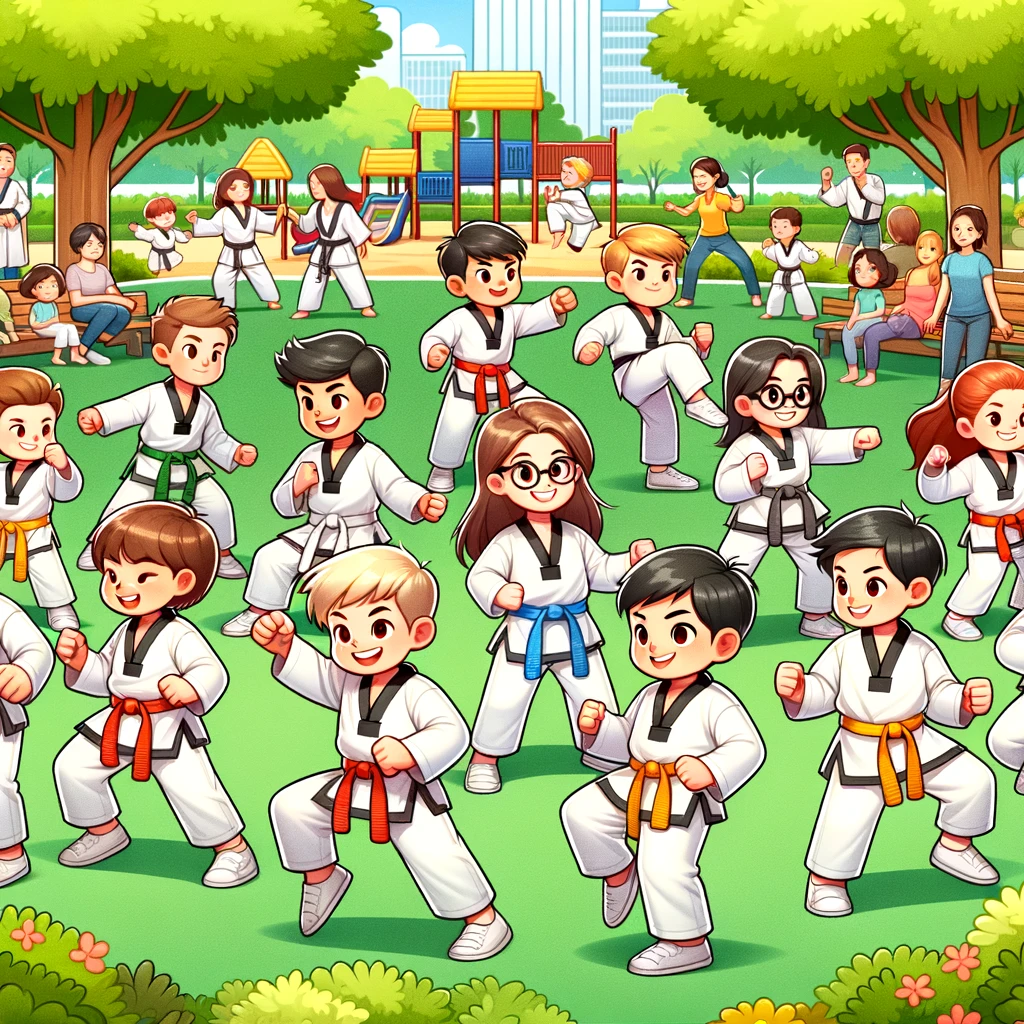
What are forms (poomsae) in Tae Kwon Do?
Forms, also known as poomsae, are a series of choreographed movements showcasing techniques, stances, and transitions in Tae Kwon Do. They are performed solo and serve as a way for practitioners to practice and demonstrate their skills.
How many forms are there in Tae Kwon Do?
The number of forms in Tae Kwon Do can vary depending on the specific style and organization. However, there are generally several recognized forms that practitioners learn and progress through as they advance in rank.
What is the purpose of practising forms in Tae Kwon Do?
Practising forms helps to develop and refine essential techniques, improve balance, coordination, and body control, and cultivate mental discipline and focus. Forms also serve as a way to preserve and pass on the traditional techniques and movements of Tae Kwon Do.
Can you explain the intricate patterns of movements in forms?
The intricate patterns of movements in forms are designed to simulate various combat situations and scenarios. They combine strikes, kicks, blocks, stances, and transitions in a specific sequence. These patterns help practitioners practice and reinforce fundamental techniques while improving their performance and fluidity.
Do all Tae Kwon Do styles have the same forms?
No, different Tae Kwon Do styles may have their own unique set of forms. While some common forms are widely recognized, the specific forms practised can vary between various styles and organizations.
Do beginners learn forms in Tae Kwon Do?
Yes, beginners in Tae Kwon Do typically start learning primary forms as part of their training. Forms are introduced gradually, along with basic techniques, and they become more complex as the practitioner advances in skill and rank.
Are there competitions for forms in Tae Kwon Do?
Yes, form competitions are a significant aspect of Tae Kwon Do tournaments. Practitioners showcase their skills by performing forms in front of judges who evaluate their technique, precision, power, and overall performance.
Can anyone practice forms in Tae Kwon Do, regardless of age or fitness level?
Yes, forms can be practised by individuals of all ages and fitness levels. Tae Kwon Do practitioners adapt the intensity and complexity of forms according to their capabilities and goals? It is a versatile aspect of Tae Kwon Do that everyone can enjoy.


